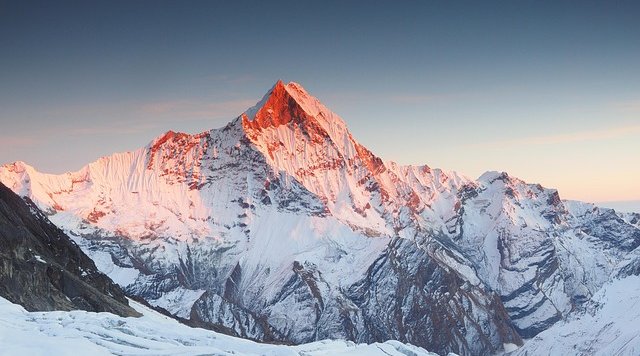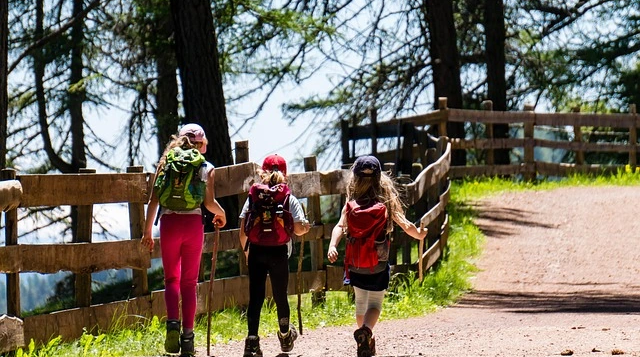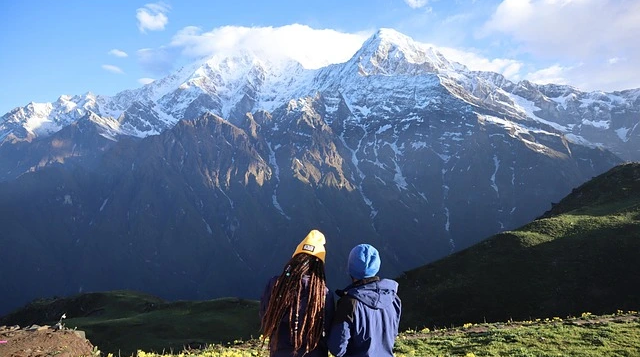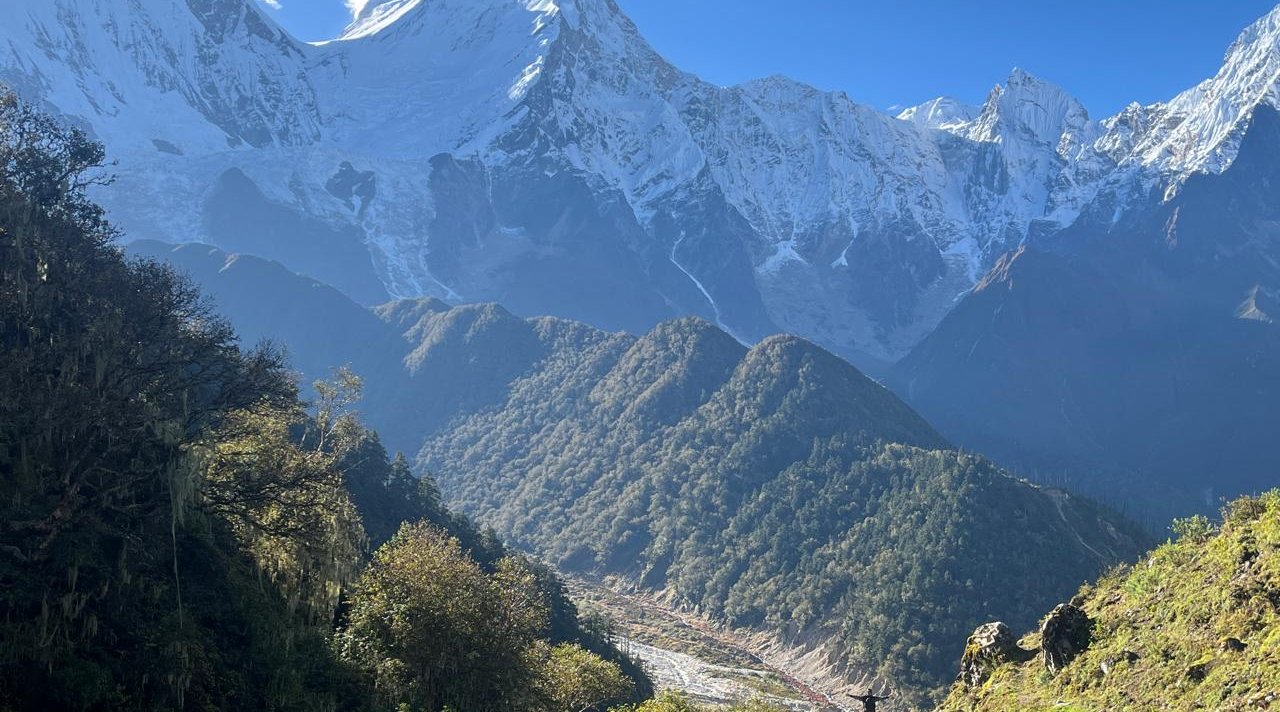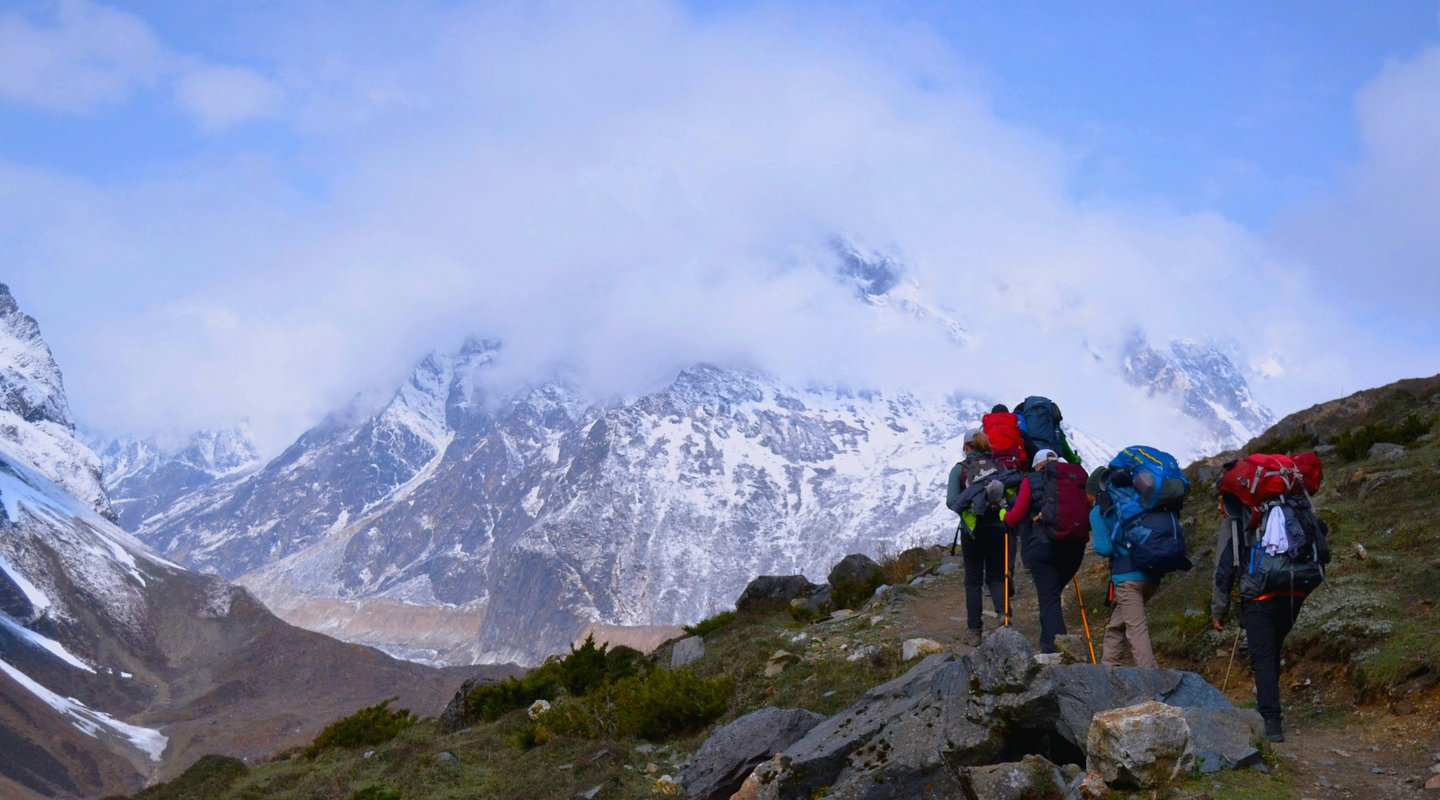Planning the Everest Base Camp trek by road difficulty assessment is crucial for your success. This comprehensive guide breaks down exactly what to expect from the physical and mental challenges of this iconic 130-kilometer journey. Understanding the road route's unique advantages will help you prepare properly for this moderate-challenging adventure to 5,364 meters elevation.
Difficulty Rating & Classification
Grade 3 Difficulty (Moderate-Challenging)
The Everest Base Camp trek by road falls into Grade 3 difficulty on the international trekking scale. This classification positions it between easy nature walks and technical mountaineering expeditions.
What Grade 3 means for your trek:
- Daily walking: 5-7 hours average
- Well-defined trails throughout
- No technical climbing skills needed
- Significant altitude factor above 3,000m
- Achievable with proper preparation
The trek covers 130 kilometers total distance over 14-18 days duration. You'll start at 1,400m in Kathmandu and slowly ascend to Everest Base Camp 5364 meters elevation, with the optional climb to Kala Patthar 5545 meters highest point.
Key difficulty factors include:
- Consecutive long walking days
- Altitude effects becoming noticeable above 3,500m
- Basic accommodation standards
- Unpredictable mountain weather
- Mental endurance for two-week journey
Most trekkers report days 3-5 as the hardest. Your body needs time to adjust to the routine and increasing altitude. After the first week, physical adaptation improves significantly.
Physical vs Mental Challenges
Understanding both aspects helps you prepare comprehensively. Many experienced trekkers report that mental challenges often prove harder than physical ones.
Physical challenges are straightforward but demanding. You'll face sustained Everest trek 5-6 hours daily walking on varied terrain. Steep sections near Namche Bazaar test your legs. Rocky, uneven surfaces require constant attention to avoid injury.
Additional physical demands:
- Carrying 5-8kg daypack daily
- Altitude-induced fatigue above 4,000m
- Cold nighttime temperatures (-5 to -15°C)
- Reduced oxygen affecting performance
- Basic washing facilities
Mental challenges develop gradually throughout the trek. The EBC trek mental preparation becomes crucial after the first week when novelty wears off.
Common mental struggles:
- Daily walking routine monotony
- Limited food variety in tea houses
- Altitude-affected mood and cognition
- Group dynamics and pace differences
- Weather delay frustrations
- Homesickness after 7-10 days
The combination of physical exhaustion and mental fatigue creates the real challenge. Success requires training both body and mind equally.
Road Route Advantages for Difficulty Management
The Everest Base Camp trek road route significantly reduces overall difficulty compared to flying to Lukla. These advantages make the trek more accessible for beginners and those concerned about altitude.
The gradual altitude gain provides the biggest benefit. Starting at 1,400m instead of 2,860m (Lukla) gives your body extra adaptation time. The EBC trek by road without flight adds 3-4 acclimatization days naturally.
Road route benefits:
- 40% lower altitude sickness risk
- Natural fitness building during approach days
- Multiple exit points if struggling
- No flight cancellation stress
- Flexible daily distances
This Everest Base Camp overland trek approach transforms the experience. Instead of shocking your system with rapid altitude gain, you build fitness and acclimatization simultaneously. The psychological benefit of controlling your pace shouldn't be underestimated.
Physical Requirements
Fitness Level Needed
Success requires moderate fitness, not athletic excellence. The Everest Base Camp trek fitness requirements focus on endurance over speed or strength.
You need to walk 5-7 hours daily with regular breaks while maintaining a steady uphill pace. Quick recovery during short rests matters more than speed. The real test is handling consecutive activity days without complete exhaustion.
Fitness benchmarks to achieve before departure:
- Climb 1,000 stairs without severe breathlessness
- Hike 15-20km on varied terrain comfortably
- Carry 8-10kg backpack for 4-5 hours
- Walk uphill continuously for 30 minutes
- Complete back-to-back training days
The Everest trek fitness level needed emphasizes consistency. You're not racing anyone – the goal is sustaining moderate effort over many days. Slow, steady pacing beats speed every time at altitude.
Test your readiness with these activities:
- 2-hour hike with 500m elevation gain
- 45-minute stair climbing session
- Full day hiking (6-7 hours)
- Weekend back-to-back long walks
If these feel manageable with moderate effort, you're ready to begin formal Everest Base Camp trek training plan development.
Age Considerations (12-70+ Possible)
Age shouldn't limit your EBC dreams. Success stories span from teenagers to septuagenarians, proving that preparation matters more than birth year.
Young trekkers (12-17) often excel physically but may struggle with patience and pacing. Their high energy and quick adaptation abilities serve them well, though adult supervision remains essential. The mental maturity for handling two weeks of basic conditions varies greatly.
Prime age trekkers (18-50) represent the majority on the trail. This group typically has:
- Ideal physical conditioning potential
- Better recovery rates between days
- Work-life balance challenges for training
- Highest overall success rates
Mature adventurers (50-70+) often surprise younger trekkers with their performance. Superior pacing skills and mental strength frequently compensate for any physical limitations. They typically prepare more thoroughly and maintain realistic expectations.
Age-specific considerations become important above 40. Joint protection through trekking poles becomes crucial. Recovery time between training sessions increases. Medical clearance is essential over 60, and travel insurance premiums rise significantly. Yet thousands of older trekkers succeed annually through proper preparation.
Pre-Existing Condition Factors
Honesty about health conditions ensures safety on the mountain. Many conditions remain manageable with proper preparation and medical consultation.
Manageable conditions with proper care include mild asthma (bring extra inhalers), controlled diabetes (monitor levels carefully), fully healed previous injuries, and mild hypertension with medication. These require extra preparation but don't prevent trekking.
Challenging conditions requiring specialist consultation:
- Heart disease or irregular rhythms
- Severe respiratory conditions
- Uncontrolled blood pressure
- Recent major surgeries
- Blood clotting disorders
Always obtain written medical clearance for insurance purposes. Carry extra medications with backups in separate bags. Understand how altitude may affect your condition. Consider hiring a private guide familiar with medical issues.
Training Program (6-8 Weeks)
Cardiovascular Training Schedule
Your Everest Base Camp trek cardiovascular training forms the foundation of preparation. Start conservatively to avoid injury while building a solid aerobic base.
Weeks 1-2 focus on base building. Begin with 30-minute flat walks on Monday, rest or gentle yoga Tuesday, 45-minute walks with small hills Wednesday, and 30-minute swimming or cycling Thursday. Take Friday completely off, then complete a 2-hour easy pace hike Saturday and short recovery walk Sunday.
Weeks 3-4 increase intensity gradually:
- Add hill intervals for 45 minutes
- Include two strength training sessions
- Extend midweek hikes to one hour
- Introduce 5kg pack weight
- Weekend hikes reach 3-4 hours
Weeks 5-6 represent peak training load. Push yourself with daily 60-90 minute activities, 5-6 hour weekend hikes, full 8-10kg pack weight, and 1,000+ stair climbing sessions. This phase mimics actual trek demands.
Weeks 7-8 taper appropriately by reducing volume 40% while maintaining some intensity. Focus shifts to flexibility, rest, and final preparation details.
Strength & Endurance Exercises
EBC trek endurance training must target specific muscle groups used in mountain trekking. Consistency beats intensity for building sustainable strength.
Lower body exercises (3x weekly) form your foundation:
- Squats: 3 sets of 15-20 reps
- Lunges: 3 sets of 12 each leg
- Step-ups: 3 sets of 15 each leg
- Calf raises: 3 sets of 20 reps
Core stability work should happen daily. Strong cores prevent back pain and improve balance on uneven terrain. Build planks to 2-minute holds, add side planks for lateral stability, include mountain climbers for dynamic strength, and finish with Russian twists for rotational control.
Don't neglect upper body maintenance. While legs do most work, arms help with trekking poles and pack adjustments. Include push-ups, resistance band rows, light shoulder presses, and tricep dips twice weekly.
Hill/Stair Climbing Practice
Specific elevation training remains non-negotiable for EBC trek physical preparation. Find creative ways to gain vertical meters in your training environment.
Urban training options include stadium stairs for 30-60 minute sessions, office building stairwells during lunch breaks, parking garage ramps on weekends, and even treadmill incline work when weather prevents outdoor training. Aim for 1,000m vertical gain weekly by week 4.
Progressive hill training builds specifically:
- Weeks 1-2: Find 100m elevation hills
- Weeks 3-4: Progress to 200-300m climbs
- Weeks 5-6: Seek 500m+ continuous ascents
- Weeks 7-8: Maintain with reduced load
Practice the slow, steady pace used at altitude. Speed doesn't matter – consistency and breathing rhythm do.
Mental Preparation Strategies
Mental strength often determines summit success more than physical fitness. Develop psychological resilience alongside physical training.
Daily mental training requires just 10-15 minutes but pays huge dividends. Visualize challenging trek moments and successful arrival at base camp. Practice positive self-talk phrases for difficult times. Develop personal mantras that resonate with your goals.
Practical mental toughness building:
- Take cold showers to build discomfort tolerance
- Complete long training walks alone
- Practice delayed gratification exercises
- Use meditation apps for focus training
Knowledge reduces anxiety significantly. Research the route thoroughly, understand altitude effects on your body, learn about Sherpa culture and customs, and read previous trekkers' experiences. Confidence grows from understanding.
Road-Specific Advantages
Gradual Acclimatization Benefits
The road route's greatest advantage is natural altitude progression. Your body receives the gift of time to adapt properly, dramatically improving success rates and enjoyment.
Starting from Kathmandu at 1,400m, the road route climbs gradually through middle hills. Compare this to the flight route's instant jump to 2,860m at Lukla – a shock to unprepared systems.
Elevation progression on road route:
- Day 1: Kathmandu (1,400m)
- Day 3: Sete (2,575m)
- Day 5: Junbesi (2,700m)
- Day 7: Kharikhola (2,040m)
- Day 9: Puiyan (2,730m)
This gradual increase allows natural red blood cell production. The Everest trek acclimatization days built into the road route happen organically through the approach trek. By the time you reach traditional starting altitudes, your body has already begun adaptation.
Altitude Sickness Reduction
Starting low makes an enormous difference in altitude sickness Everest Base Camp prevention. The statistics speak clearly about road route benefits.
Research shows 40% lower acute mountain sickness rates on road routes compared to flying. Symptoms that do occur tend to be milder and more manageable. Sleep quality remains better throughout the trek, leading to higher overall summit success rates.
The natural adaptation timeline works with your physiology:
- Days 1-4: Gentle altitude introduction
- Days 5-8: Noticeable adaptation begins
- Days 9-12: Significant improvement
- Days 13+: Well-acclimatized state
This progression proves impossible when flying directly to altitude. The Everest Base Camp trek road vs flight comparison clearly favors the gradual approach for health and safety.
Flexible Pacing Options
Road routes offer unmatched flexibility for managing difficulty. Without flight schedules constraining you, the trek adapts to your needs rather than forcing you into rigid timelines.
You can start walking later if feeling tired, add rest days anywhere along the route, shorten daily distances when needed, and never worry about missing flights. This flexibility dramatically reduces stress, which significantly impacts physical performance at altitude.
Customization options when feeling strong:
- Explore side valleys
- Add photography stops
- Engage in cultural experiences
- Take extra acclimatization hikes
Modification options when struggling:
- Split long days into shorter segments
- Take additional rest days
- Choose lower sleeping altitudes
- Arrive at destinations earlier
Common Challenges & Solutions
Weather Variability
Mountain weather changes rapidly, but preparation prevents most problems. Understanding seasonal patterns helps you choose the Everest Base Camp trek best time for your preferences.
Spring (March-May) offers stable weather windows lasting 3-5 days, warmer daytime temperatures, spectacular rhododendron blooms at lower elevations, and increasingly clear mountain views. This season sees the most trekkers but for good reason.
Autumn (September-November) provides:
- Crystal clear post-monsoon views
- Cooler but stable conditions
- Perfect photography light
- Less crowded than spring
Weather management strategies that work include starting early each morning before clouds build, using layered clothing systems for temperature changes, waterproofing all essential items, and maintaining flexible daily plans. The road route's advantage shows when weather delays occur – you're not trapped in Lukla with cancelled flights.
Long Walking Days
The reality of sustained daily trekking hits everyone eventually. Understanding the routine helps mental preparation for 5-6 hours daily walking throughout the trek.
A typical trekking day follows this pattern: wake at 6:00 AM for packing, breakfast at 7:00 AM, start walking by 8:00 AM, enjoy tea break around 10:00 AM, take lunch break 12:30-1:30 PM, continue afternoon trekking, arrive at destination by 4:00 PM, rest and explore until dinner at 6:30 PM, then prepare for sleep by 8:00 PM.
This routine repeats throughout the EBC trek 14-18 days duration. Energy management becomes crucial for sustaining performance.
Proven strategies include:
- Maintaining consistent pace over speed
- Taking small snacks every hour
- Drinking water every 30 minutes
- Finding rhythm with trekking poles
Breaking the total distance into daily achievements makes the journey manageable. Focus on today's destination rather than dwelling on remaining days.
Basic Accommodation & Food in Sherpa Villages
Sherpa villages Everest trek accommodation varies significantly with altitude. Managing expectations prevents disappointment and helps you appreciate available comforts.
Lower villages below 3,000m often surprise with their comfort level. Private rooms remain available, hot showers work reliably (solar or gas heated), menus offer good variety, and device charging costs remain reasonable.
Higher villages above 4,000m require adjustment:
- Dormitory accommodation becomes standard
- Washing facilities turn basic
- Menu variety decreases significantly
- Charging prices increase dramatically
Food realities change with altitude too. Common menu items include dal bhat (rice and lentils), various noodle soups, fried rice preparations, morning porridge options, and basic egg dishes. Prices increase significantly with altitude while variety decreases. Pack favorite snacks from Kathmandu.
Beginner Success Tips
Practical trekking to EBC fitness tips from successful beginners provide invaluable insights:
Physical preparation must start 8 weeks minimum before departure. Focus on actual walking rather than gym work alone. Train with your real trekking gear to identify problems early. Break in boots completely – no exceptions. Practice consecutive training days to simulate trek demands.
Mental strategies that ensure success:
- Set small daily goals
- Celebrate every achievement
- Make friends on the trail
- Keep a detailed journal
- Stay present-focused
The most practical advice from veterans includes hiring a porter to carry your main bag (worth every rupee), going slower than feels necessary especially early on, drinking water constantly even without thirst, eating regularly even without appetite, and resting before feeling exhausted.
Common beginner mistakes to avoid:
- Starting too fast on day one
- Inadequate hydration throughout
- Skipping acclimatization recommendations
- Overpacking unnecessary items
- Ignoring early altitude symptoms
Start your well-prepared journey with our beginner-focused Everest Base Camp trek by road guide for detailed daily itineraries and insider tips.
FAQ about the Everest Base Camp trek difficulty
How hard is the Everest Base Camp trek?
How hard is Everest Base Camp trek depends primarily on your preparation level. The Everest Base Camp trek moderate difficulty rating reflects its achievability for prepared beginners. With 6-8 weeks of targeted training, most reasonably fit individuals succeed. The road route reduces difficulty significantly through gradual acclimatization and pacing flexibility.
Is the Everest Base Camp trek by road easier than flight?
Yes, the Everest Base Camp trek road vs flight comparison clearly favors the road route for difficulty management. Starting at 1,400m instead of 2,860m provides crucial adaptation time. The extra 3-4 days reduce altitude sickness risk by approximately 40%. Mental stress also decreases without flight uncertainty and potential cancellations.
What is the Everest Base Camp trek difficulty level?
The Everest Base Camp trek difficulty level officially rates as Grade 3 (Moderate-Challenging). This means non-technical trekking with significant altitude factors. Daily walks average 5-7 hours on established trails. The primary challenge comes from consecutive days at altitude rather than technical terrain difficulty.
How many days does it take to complete the Everest trek?
The road route typically takes 14-18 days total, depending on your pace and rest day choices. This includes the gradual approach from Kathmandu through lower villages. The longer duration compared to flying (12-14 days) provides superior acclimatization and richer cultural experiences through additional Sherpa villages.
What training is required for Everest Base Camp trek?
Essential training includes 6-8 weeks of cardiovascular preparation focusing on hiking and walking. Build to 5-6 hour weekend hikes with elevation gain. Add strength training for legs and core stability. Practice with full trekking gear including loaded backpack. Mental preparation through visualization and discomfort tolerance proves equally important.
How much does the EBC trek cost in 2025?
EBC trek cost 2025 for the road route ranges from $800-2,500 depending on service levels. Budget options with basic tea houses cost $800-1,200. Standard guided treks run $1,500-2,000. Comfort packages with porters reach $2,000-2,500. The road route saves approximately $400 in flight costs.
What's the best time for Everest Base Camp trek by road?
Everest Base Camp trek best time for road routes includes spring (March-May) for warm stable weather and autumn (September-November) for crystal clear views. The road remains accessible during monsoon (June-August) when flights often cancel, though expect wet conditions. Winter presents cold challenges but fewer crowds and possible road access.
Do Everest Base Camp trek packages include training advice?
Quality Everest Base Camp trek packages should include comprehensive pre-trek fitness guidelines, structured training schedule templates, detailed gear recommendations, altitude acclimatization information, and ongoing guide support. Ask operators specifically about preparation support and training resources when comparing options.
Conclusion
The Everest Base Camp trek by road difficulty ranks as moderate-challenging but proves achievable with proper preparation. Your success depends more on dedicated 6-8 week training than natural athletic ability. The road route's gradual approach from 1,400m transforms this challenge through natural acclimatization, making the 130-kilometer journey to 5,364 meters elevation manageable for prepared beginners. The Everest Base Camp trek moderate difficulty shouldn't discourage you – thousands succeed annually by choosing the road route for its gradual altitude gain, flexible pacing, and rich cultural immersion through Sherpa villages.
Ready to transform your Everest dream into reality? The mountains are calling, and the road route sets you up for success. Start your well-prepared journey today by contacting our expert team at Himalayan Hero. We'll guide you through every step from training to summit, ensuring your adventure becomes the achievement of a lifetime.


